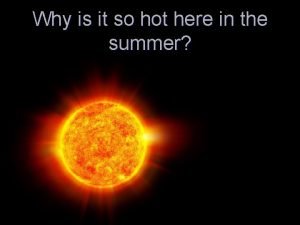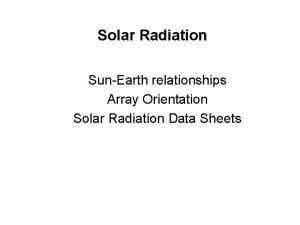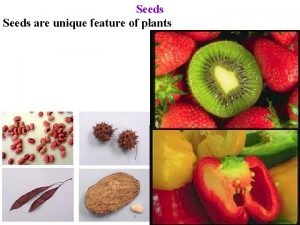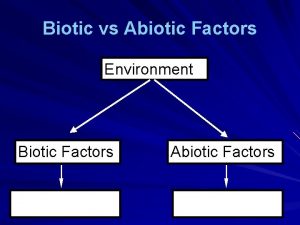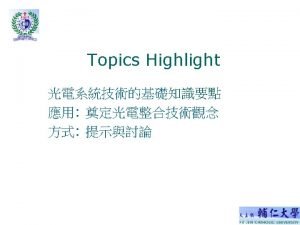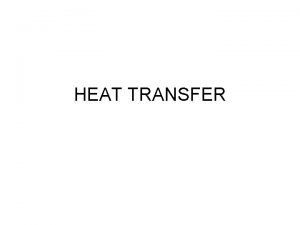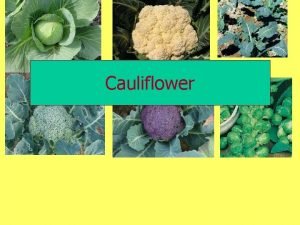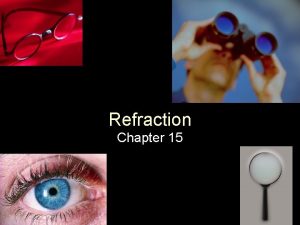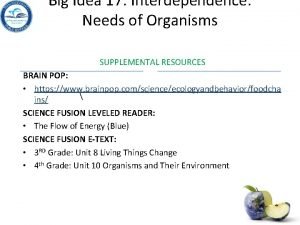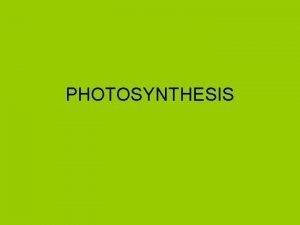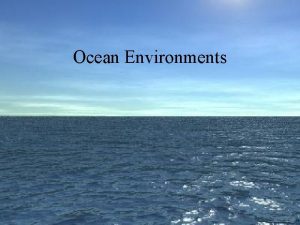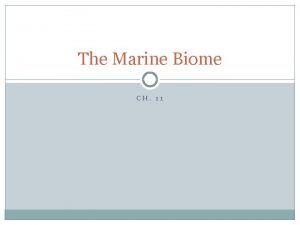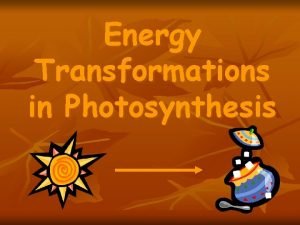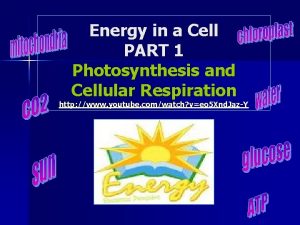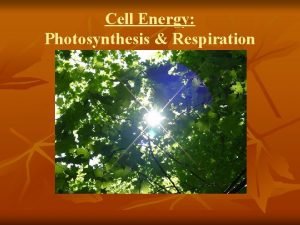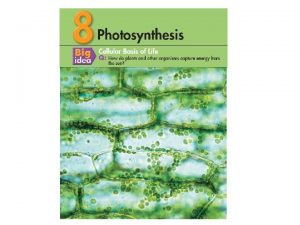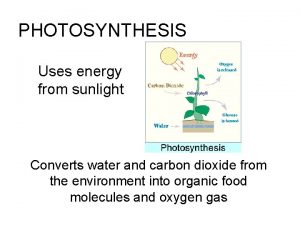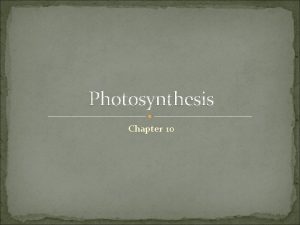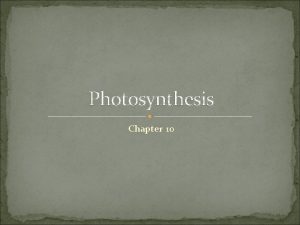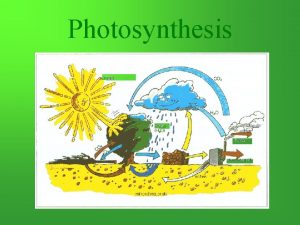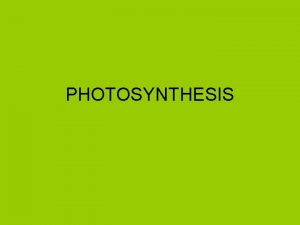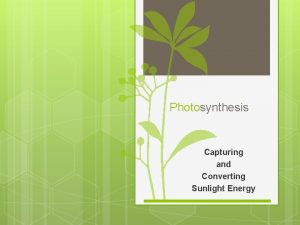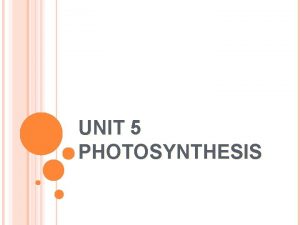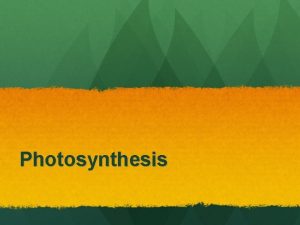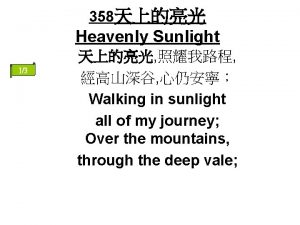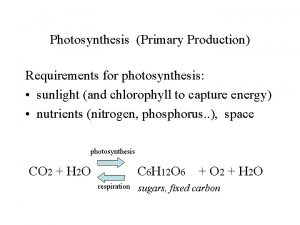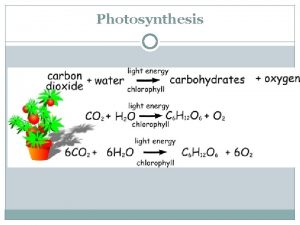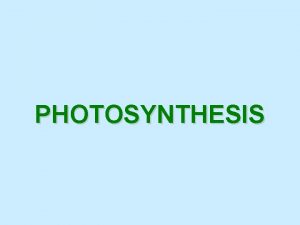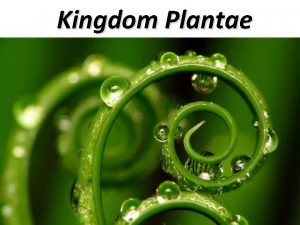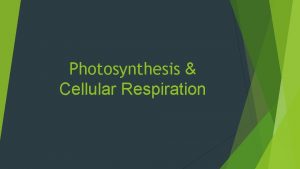PHOTOSYNTHESIS Photosynthesis uses the energy in sunlight to














![U. 6 LIMITING PHOTOSYNTHESIS � CO 2 concentration: ◦ Increase [CO 2] increase rate U. 6 LIMITING PHOTOSYNTHESIS � CO 2 concentration: ◦ Increase [CO 2] increase rate](https://slidetodoc.com/presentation_image_h2/a11d0b1e6ce8189374db8b7ae60a0f18/image-15.jpg)














- Slides: 29

PHOTOSYNTHESIS Photosynthesis uses the energy in sunlight to produce the chemical energy needed for life. Topic 2. 9 IB Biology Miss Werba

TOPIC 2 – MOLECULAR BIOLOGY 2. 1 MOLECULES TO METABOLISM 2. 2 2. 9 PHOTOSYNTHESIS WATER 2. 3 2. 8 CELL RESPIRATION CARBOHYDRATES & LIPIDS 2. 7 DNA REPLICATION, TRANSCRIPTION & TRANSLATION 2. 4 PROTEINS 2. 6 STRUCTURE OF DNA & RNA J WERBA – IB BIOLOGY 2. 5 ENZYMES 2

THINGS TO COVER Statement U. 1 Guidance Photosynthesis is the production of carbon compounds in cells using light Energy. Students should know that visible light has wavelengths between 400 and 700 nanometres, but they are not expected to recall the wavelengths of specific colours of light. U. 2 Visible light has a range of wavelengths with violet the shortest wavelength and red the longest. U. 3 Chlorophyll absorbs red and blue light most effectively and reflects green light more than other colours. U. 4 Oxygen is produced in photosynthesis from the photolysis of water. U. 5 Energy is needed to produce carbohydrates and other carbon compounds from carbon dioxide. U. 6 Temperature, light intensity and carbon dioxide concentration are possible limiting factors on the rate of photosynthesis. J WERBA – IB BIOLOGY 3

THINGS TO COVER Statement Guidance A. 1 Changes to the Earth’s atmosphere, oceans and rock deposition due to photosynthesis. S. 1 Drawing an absorption spectrum for chlorophyll and an action spectrum for photosynthesis. S. 2 Design of experiments to investigate the effect of limiting factors on photosynthesis. Water free of dissolved carbon dioxide for photosynthesis experiments can be produced by boiling and cooling water. Separation of photosynthetic pigments by chromatograph (Practical 4) Paper chromatography can be used to separate photosynthetic pigments but thin layer chromatography gives better results. S. 3 NOS 3. 1 Experimental design J WERBA – IB BIOLOGY 4

U. 1 PHOTOSYNTHESIS � Photosynthesis is used by producers to make chemical energy. � Plants and some other organisms (eg. algae) photosynthesise. � Photosynthesis is the production of carbon compounds in cells using light energy. � Photosynthesis involves the conversion of light energy into chemical energy (ATP) J WERBA – IB BIOLOGY 5

U. 2 LIGHT ENERGY � Light from the Sun is composed of a range of wavelengths (colours) Red, Orange, Yellow, Green, Blue, Indigo, Violet � Light contains a range of wavelengths: ◦ shortest – blue/violet ≈ 400 nm ◦ longest - red ≈ 700 nm J WERBA – IB BIOLOGY 6

U. 3 ABSORPTION OF LIGHT � Chlorophyll is the main photosynthetic pigment. � It is located in the chloroplasts. � Chlorophyll absorbs light in the light-dependent stage of photosynthesis � There are different types of chlorophyll: ◦ main one = chlorophyll a � When chlorophyll absorbs light energy, it releases electrons which are used to make ATP (chemical energy) J WERBA – IB BIOLOGY 7

U. 3 ABSORPTION OF LIGHT � Chlorophyll absorbs mainly red and blue light � Chlorophyll does not absorb (reflects) green light � Explains why most leaves are green � Absorption spectrum: The spectrum of light absorbed by chlorophyll � Action spectrum: The spectrum of light used for photosynthesis J WERBA – IB BIOLOGY 8

U. 3 S. 1 ABSORPTION OF LIGHT � DRAW! J WERBA – IB BIOLOGY 9

LIGHT-DEPENDENT REACTIONS U. 4 � Light energy is required for the first stage of photosynthesis � Light energy is used to: ◦ produce ATP ◦ to split water molecules to form O 2 and H+ (=photolysis) J WERBA – IB BIOLOGY 10

LIGHT-INDEPENDENT REACTIONS U. 5 � ATP and hydrogen (from the photolysis of water) are used to fix carbon dioxide to make organic molecules. � This allows for the production of more complex organic molecules (eg. sugars) � These organic molecules can then be stored to use in cellular respiration as required. J WERBA – IB BIOLOGY 11

U. 4 U. 5 PHOTOSYNTHESIS J WERBA – IB BIOLOGY 12

U. 6 LIMITING PHOTOSYNTHESIS � Temperature, light intensity and carbon dioxide concentration are possible limiting factors on the rate of photosynthesis. � This means that their levels can impact upon the rate of photosynthesis. J WERBA – IB BIOLOGY 13

U. 6 LIMITING PHOTOSYNTHESIS � Temperature: ◦ Enzymes controlling photosynthesis are temperature sensitive ◦ Increase temp faster reaction - until enzymes denature J WERBA – IB BIOLOGY 14
![U 6 LIMITING PHOTOSYNTHESIS CO 2 concentration Increase CO 2 increase rate U. 6 LIMITING PHOTOSYNTHESIS � CO 2 concentration: ◦ Increase [CO 2] increase rate](https://slidetodoc.com/presentation_image_h2/a11d0b1e6ce8189374db8b7ae60a0f18/image-15.jpg)
U. 6 LIMITING PHOTOSYNTHESIS � CO 2 concentration: ◦ Increase [CO 2] increase rate ◦ Rate will plateau eventually when enzymes are working at maximum efficiency J WERBA – IB BIOLOGY 15

U. 6 LIMITING PHOTOSYNTHESIS � Light intensity: ◦ More light, more photosynthesis ◦ Rate will plateau eventually when enzymes are working at maximum efficiency ◦ Different wavelengths of light will have different effects on the rate of photosynthesis J WERBA – IB BIOLOGY 16

EXPERIMENTS OF LIMITING FACTORS OF PHOTOSYNTHESIS S. 2 � Oxygen Production: ◦ Investigate formation of air bubbles from submerged plant ◦ Count number or volume of bubbles in time period ◦ Data logger measuring dissolved oxygen J WERBA – IB BIOLOGY 17

EXPERIMENTS OF LIMITING FACTORS OF PHOTOSYNTHESIS S. 2 � CO 2 uptake: ◦ p. H of water will rise as CO 2 is absorbed from water ◦ Investigate p. H change in water with submerged plant J WERBA – IB BIOLOGY 18

EXPERIMENTS OF LIMITING FACTORS OF PHOTOSYNTHESIS � Change S. 2 in Biomass (indirect): ◦ Investigate weight change in a dehydrated plant �Dehydration ensures the change in biomass reflects a change in organic matter and not water content ◦ Investigate glucose production by determining the change in starch levels in a plant �Starch can be identified via iodine staining and quantified using a colorimeter J WERBA – IB BIOLOGY 19

INFLUENCE OF PHOTOSYNTHESIS ON EARTH’S ATMOSPHERE, OCEANS & ROCKS A. 1 � The first photosynthetic organisms appeared on Earth ~3. 5 billion years ago. � This was followed by the “Oxygen Catastrophe”, as a result of the large volume of oxygen gas being produced. � This resulted in the oxidation of some elements dissolved in the ocean water – eg. iron. � These would have then precipitated, and become part of the rock layers. J WERBA – IB BIOLOGY Iron-banded formations 20

INFLUENCE OF PHOTOSYNTHESIS ON EARTH’S ATMOSPHERE, OCEANS & ROCKS A. 1 � At 1% oxygen, eukaryotic metabolism became possible. � As they increased, metabolic efficiency increased and aerobic organisms proliferated. � As the levels in the upper atmosphere increased further, sunlight would have acted on it and formed ozone, changing the conditions on Earth. � Oxygen levels kept rising, becoming close to 20% of the atmosphere ~750 -630 mya J WERBA – IB BIOLOGY 21

CHROMATOGRAPHY � Paper chromatography can be used to separate photosynthetic pigments. � Thin layer chromatography gives better results. � https: //youtu. be/e 3 l. Rt 9 Xd. V 0 s J WERBA – IB BIOLOGY 22

CHROMATOGRAPHY � TLC has 2 phases: a mobile phase and a stationary phase � The mobile phase uses a liquid solvent (eg. acetone, alcohol, ether – not water) � The solvent moves up the TLC plate by capillary action, taking the sample/mixture with it. � The components of the mixture will travel at different speeds due to their size/density, causing them to separate J WERBA – IB BIOLOGY 23

CHROMATOGRAPHY � J WERBA – IB BIOLOGY 24

CHROMATOGRAPHY � Example: J WERBA – IB BIOLOGY 25

J WERBA – IB BIOLOGY 26

PHOTOSYNTHESIS Q 1. Which type of light is least useful for photosynthesis in terrestrial plants? A. B. C. D. Blue Green White Red J WERBA – IB BIOLOGY 27

PHOTOSYNTHESIS Q 2. A plant is exposed to increasing light intensity from very dim to bright light, while the carbon dioxide concentration and temperature are kept at an optimum level. What will happen to the rate of oxygen production? A. B. C. D. It will increase exponentially. It will remain constant. It will decrease to a minimum level. It will increase to a maximum level. J WERBA – IB BIOLOGY 28

PHOTOSYNTHESIS Q 3. Outline how light energy is used and how organic molecules are made in photosynthesis. (6 marks) J WERBA – IB BIOLOGY 29
 Photosynthesis transforms light energy into chemical energy
Photosynthesis transforms light energy into chemical energy Earth's revolution
Earth's revolution Inertia vs gravity
Inertia vs gravity Hours of sunlight map
Hours of sunlight map Is sunlight necessary for seed germination
Is sunlight necessary for seed germination Siklus hidup produk kfc
Siklus hidup produk kfc Is mud abiotic or biotic
Is mud abiotic or biotic Lux
Lux How does heat move
How does heat move Preventive of curds from direct sunlight is known as
Preventive of curds from direct sunlight is known as Raindrops sunlight and refraction lyrics
Raindrops sunlight and refraction lyrics Beauty poem class 6 ppt
Beauty poem class 6 ppt Big idea 17 study guide interdependence
Big idea 17 study guide interdependence Sunligj
Sunligj Benthic zone divisions
Benthic zone divisions How much sunlight does the marine biome get
How much sunlight does the marine biome get Is sunlight biotic
Is sunlight biotic Energy energy transfer and general energy analysis
Energy energy transfer and general energy analysis Energy energy transfer and general energy analysis
Energy energy transfer and general energy analysis Radiant energy photosynthesis
Radiant energy photosynthesis Photosynthesis energy transformation
Photosynthesis energy transformation Cellular energy section 2 photosynthesis answer key
Cellular energy section 2 photosynthesis answer key Chapter 6 cell energy photosynthesis and respiration
Chapter 6 cell energy photosynthesis and respiration Hình ảnh bộ gõ cơ thể búng tay
Hình ảnh bộ gõ cơ thể búng tay Lp html
Lp html Bổ thể
Bổ thể Tỉ lệ cơ thể trẻ em
Tỉ lệ cơ thể trẻ em Chó sói
Chó sói Tư thế worm breton là gì
Tư thế worm breton là gì Alleluia hat len nguoi oi
Alleluia hat len nguoi oi

